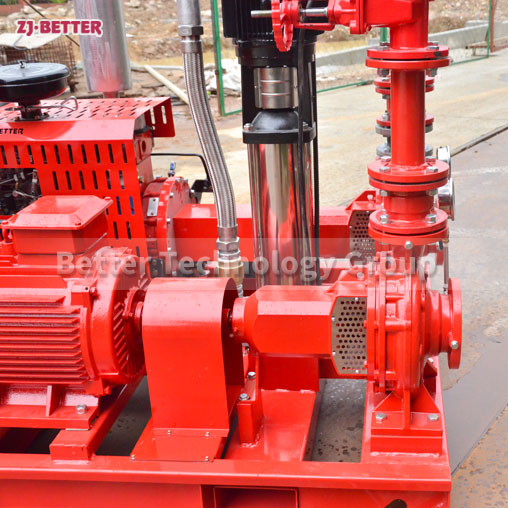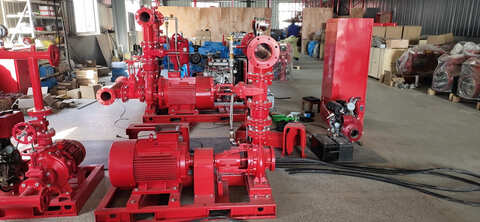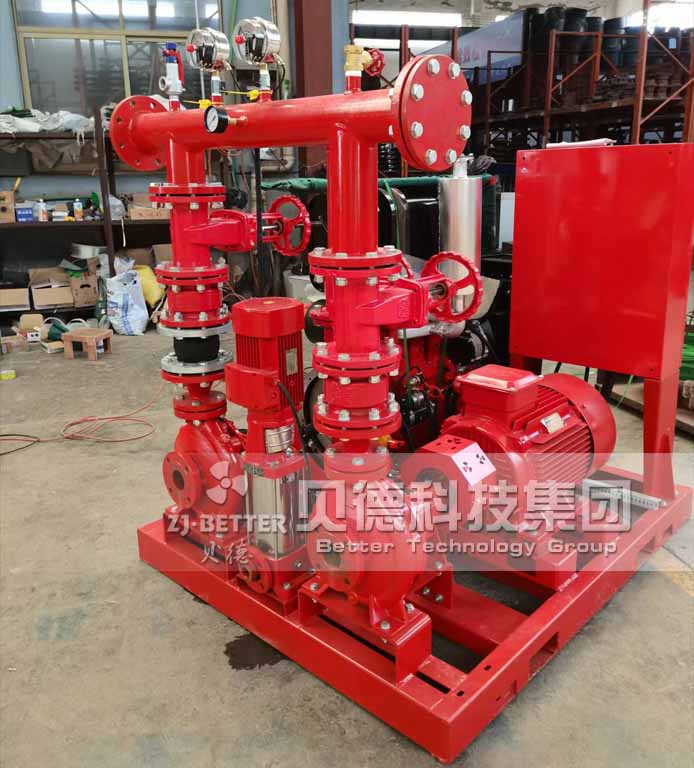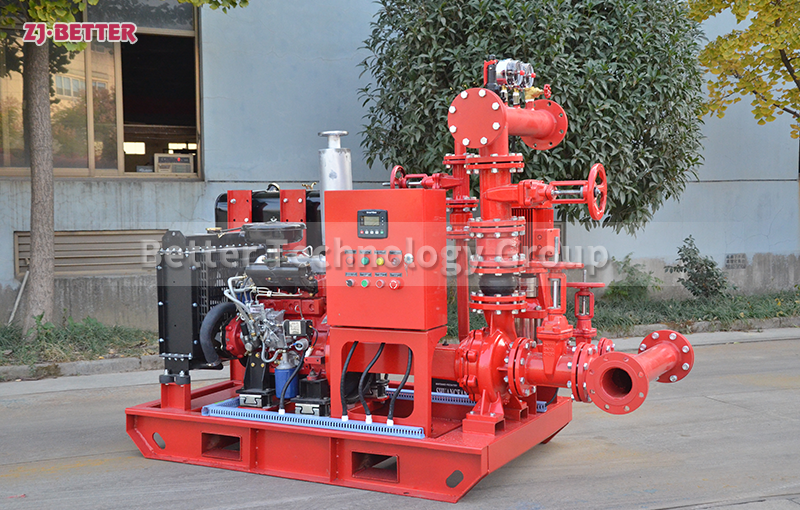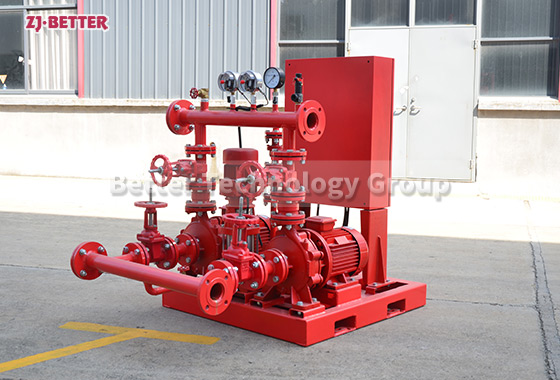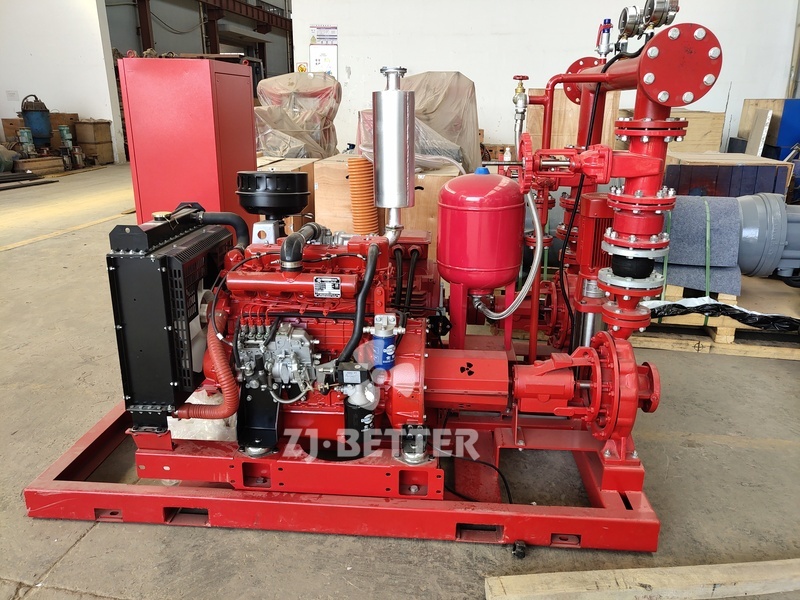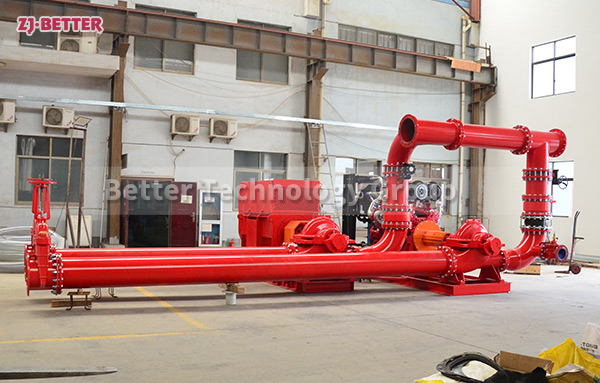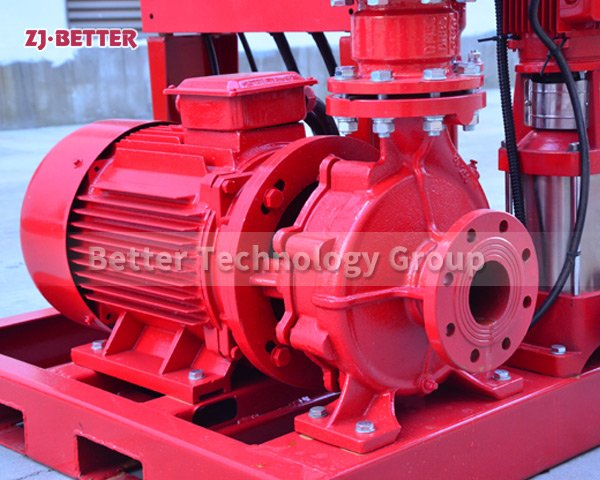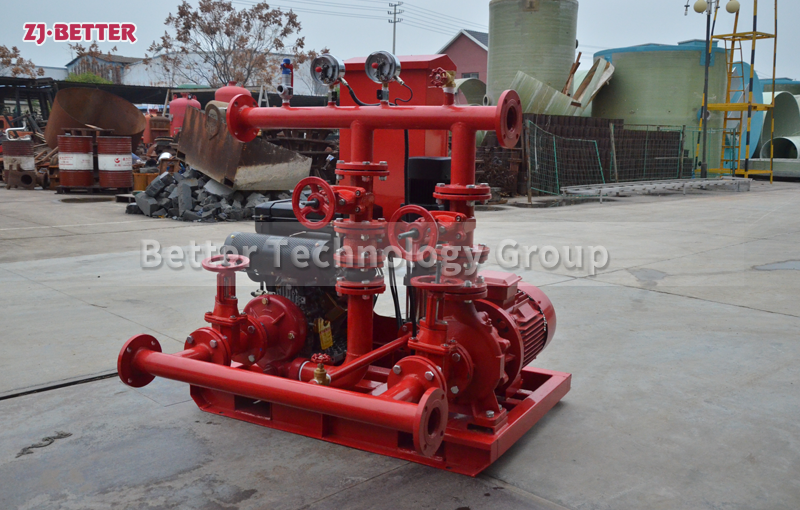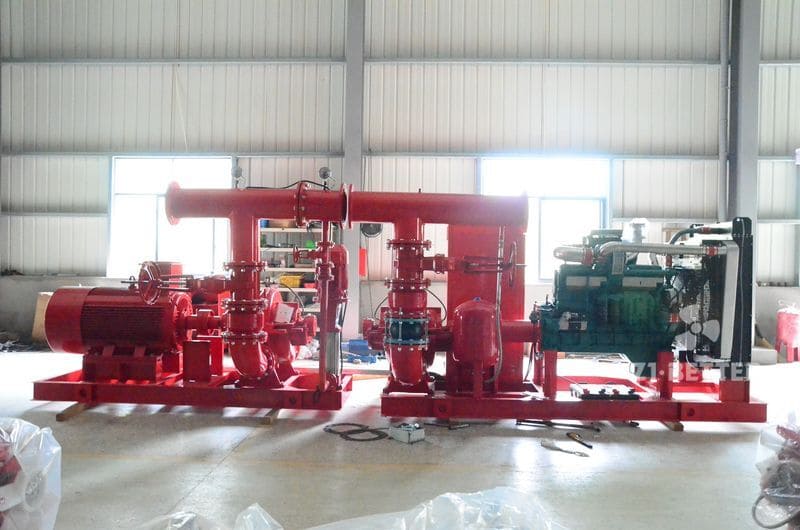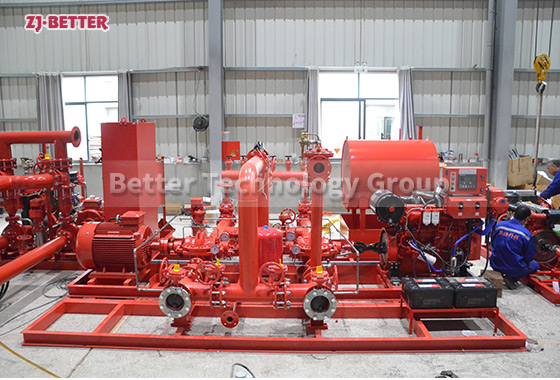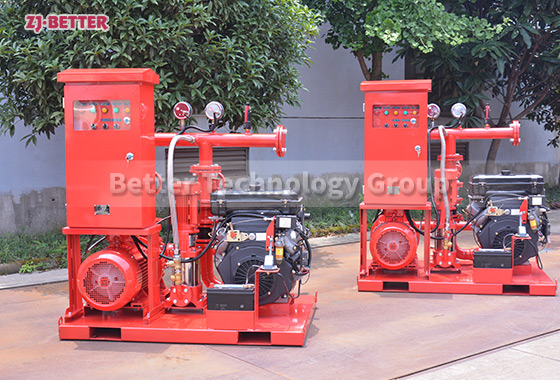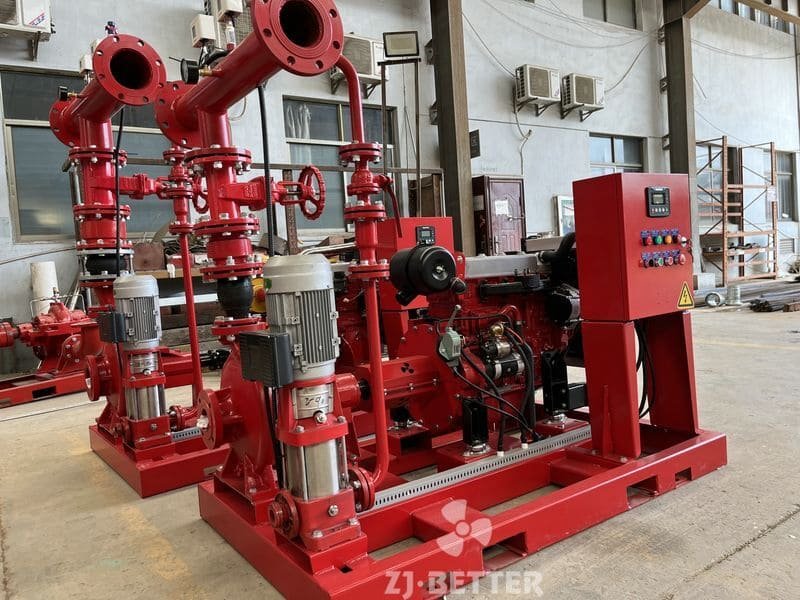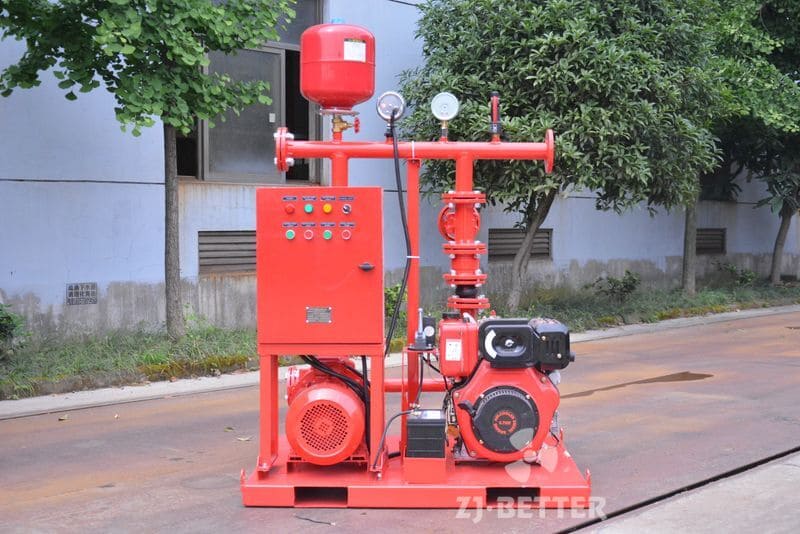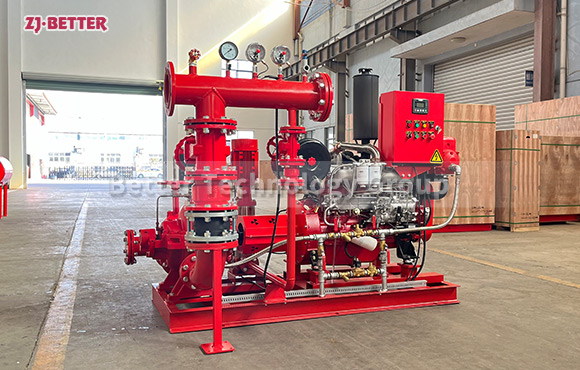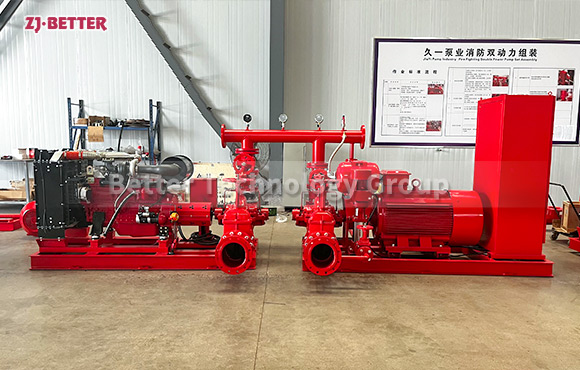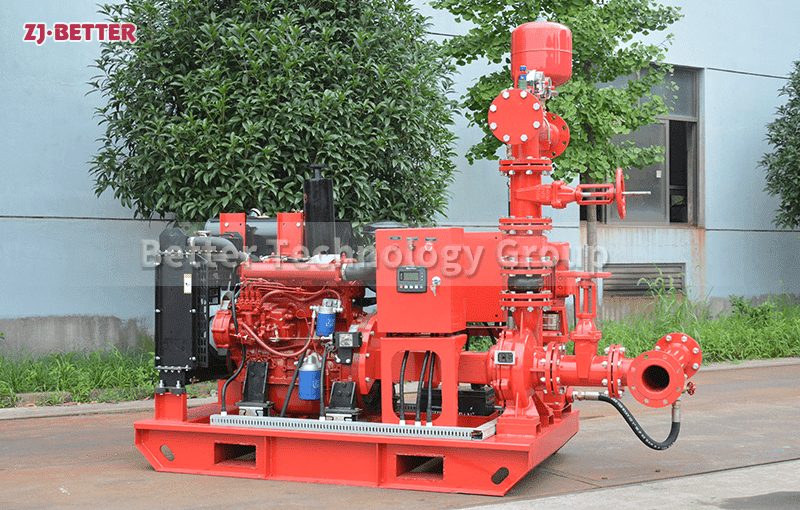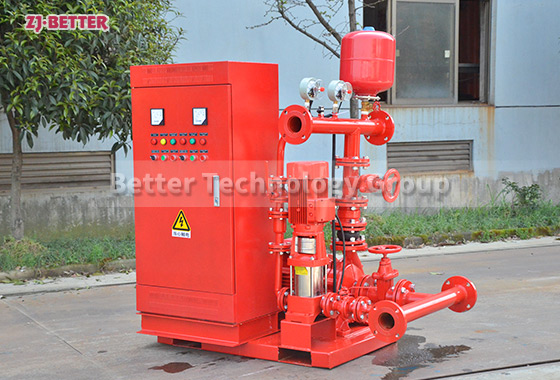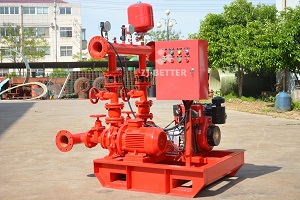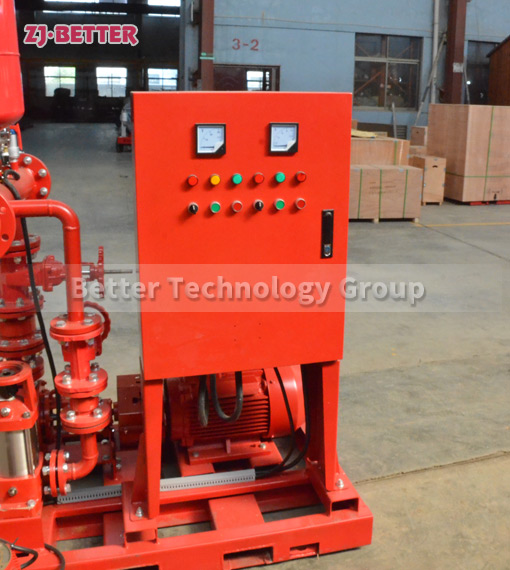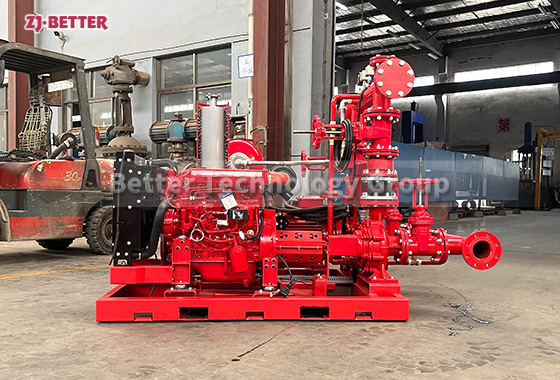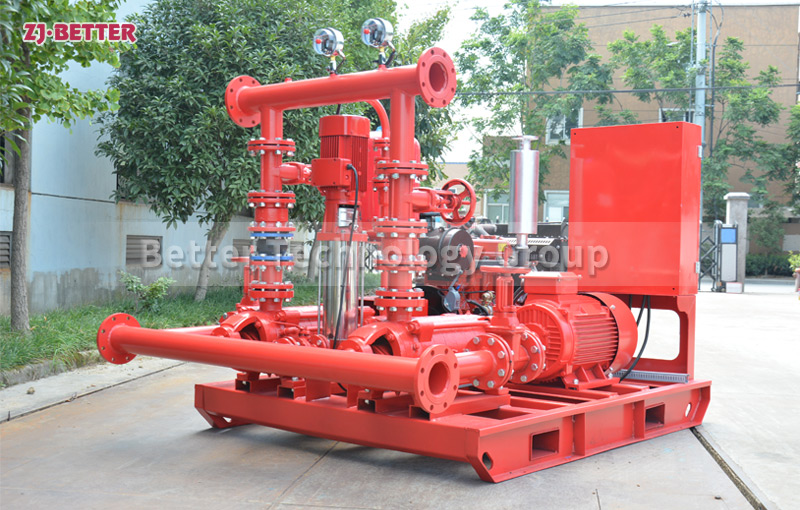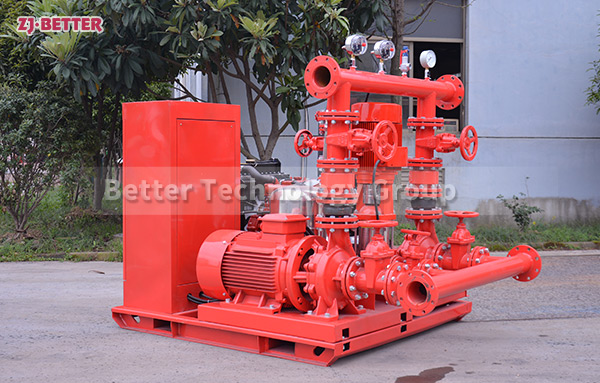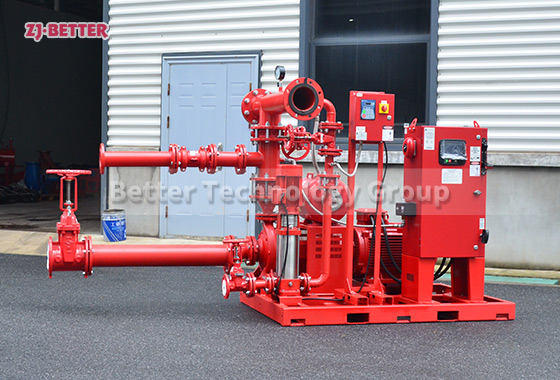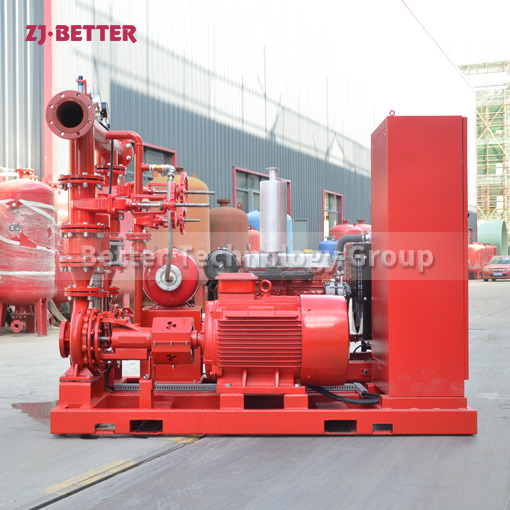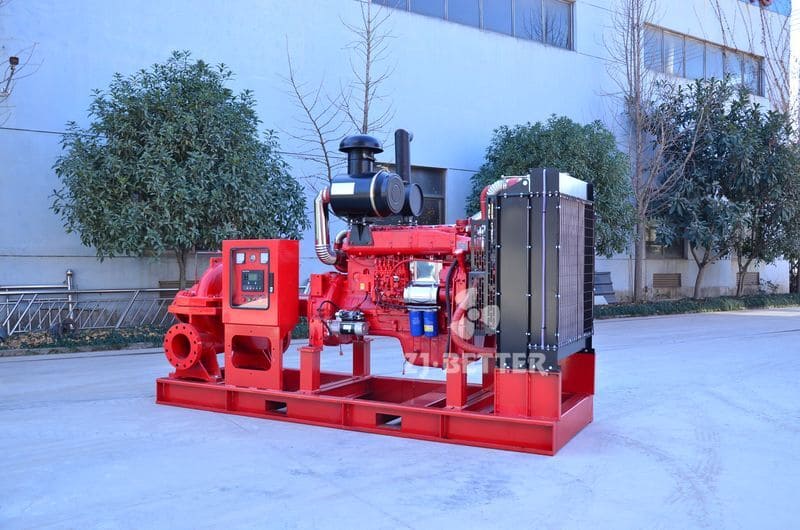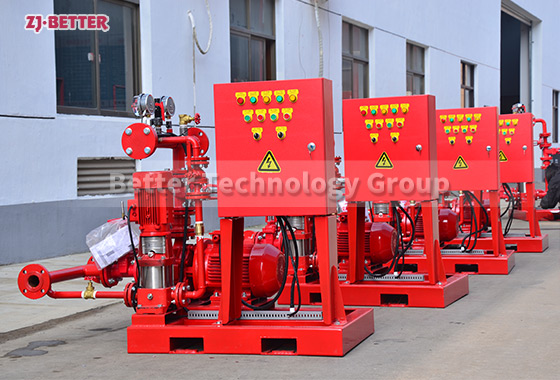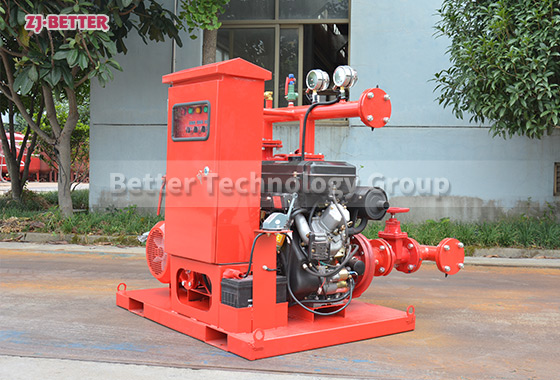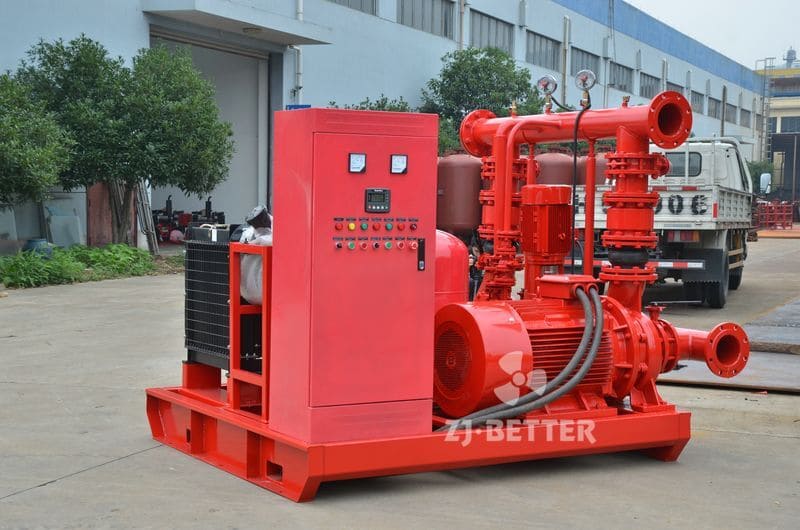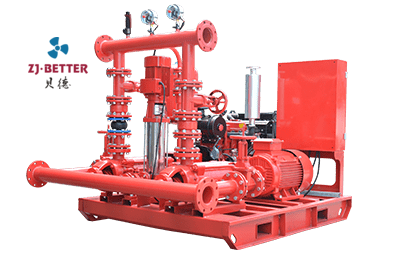Detail of the factory’s popular EDJ fire pump
The EDJ model is basically a combination of Electric, Deisel and Jockey pumps. They mainly consist of an electric motor driven end suction pump and a backup pump of a diesel engine driven end suction pump. It is also combined with a jockey pump for maintenance to form a complete skid.
The complete EDJ style skid is assembled with all discharge line fittings and connected to the skid mounted control panel.
main feature
1. Automatic start: When receiving fire/pipe pressure/power failure/or other start-up signals, it can be automatically started and put into full-load operation within 15 seconds.
2. Automatic charging: The power of the diesel engine or the charging motor automatically charges the battery to ensure its smooth start.
3. Automatic alarm: When the diesel engine has problems such as low oil pressure and high temperature water, it will automatically alarm, and the overspeed alarm will stop.
4. Automatic preheating: keep the diesel engine in a standby state to ensure emergency work.
5. Direct connection type: The diesel pump unit below 360kw adopts the direct connection technology between the diesel engine and the pump through the elastic coupling, which reduces the failure points, greatly shortens the start-up time, and improves the reliability and emergency performance.
6. Users can also request additional alarm output (non-standard delivery);
7. With telemetry, remote signaling and remote control (non-standard delivery);

